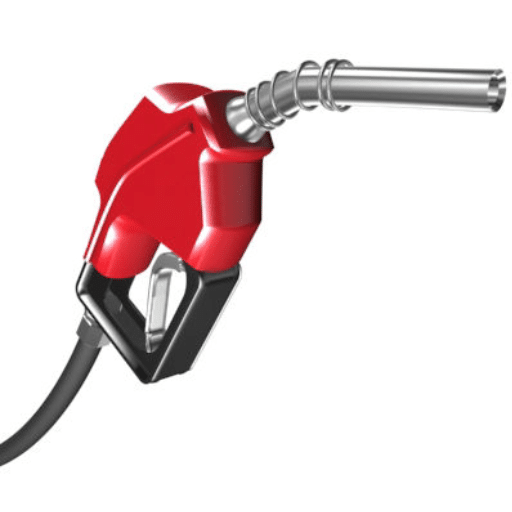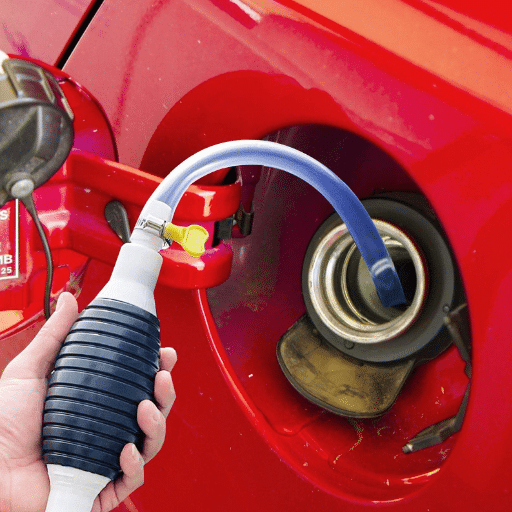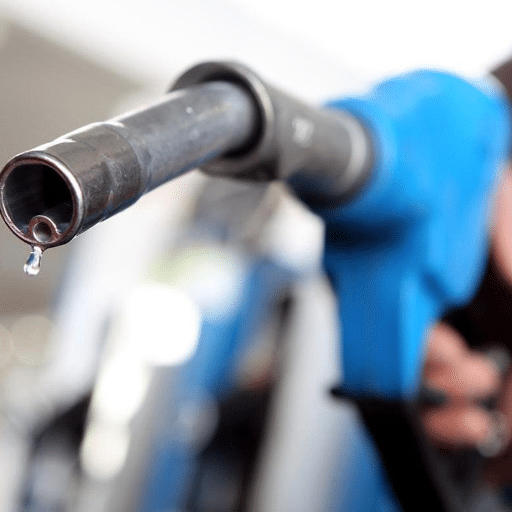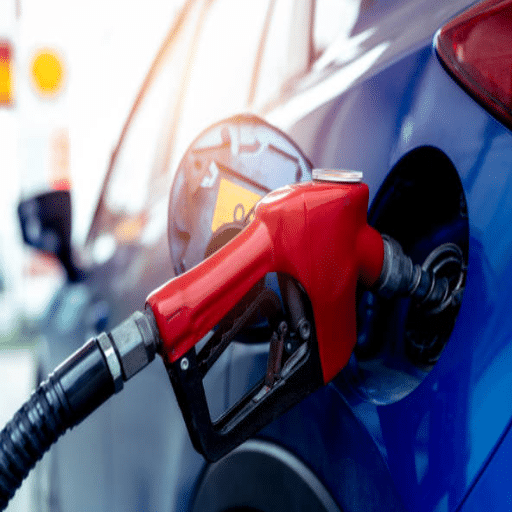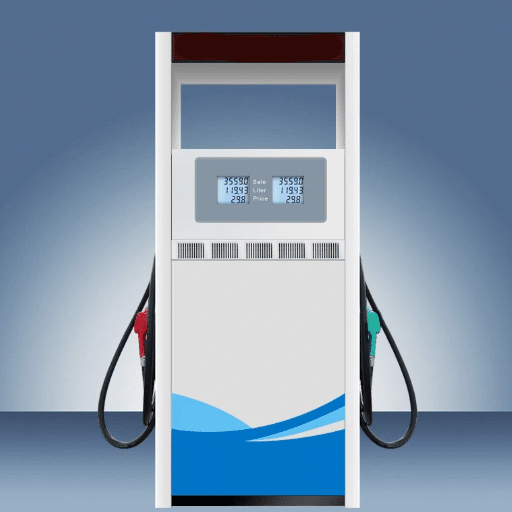The energy and transportation fields in China are undergoing further accelerated progress, and at the core of this development is the strong network of gas stations, permitting mobility throughout the country. Millions of vehicles ply the streets, driven by growing demands for fuel efficiency and sustainability, making gas stations all the more crucial for sustaining the economy and daily life. The study presents an exhaustive report on the number of gas stations across China and the trends shaping the sector. With all technological advancements evolving alongside some newly emerging challenges, this review aims to provide readers with a holistic understanding of the fuel distribution space in China, thereby helping them develop a deeper insight into this dynamic sector.
Understanding Gas Stations in China

Think of China as having one of the world’s largest networks, with more than 100,000 gas stations scattered across the nation. By operation, we mean the big state-owned entities, such as Sinopec and PetroChina, along with several small private and regional companies. Such a vast network testifies to the magnitude of China’s automotive market, with a further breakdown into supporting transportation and logistics at a national level. Or so it goes that higher densities are usually found in urban areas. Conversely, rural areas tend to have fewer facilities because demand is generally lower. Infrastructure, by this lengthy nature, meets the fuel requirements of a population on an unprecedented scale.
Definition and Types of Gas Stations
In the old times, these were simply places to buy gasoline. However, gas stations now offer a range of additional services. In straightforward terms, it is a place that provides fuel and related services to vehicles. However, gas stations typically offer petrol, diesel, and other petroleum products, as well as additional services such as car washes, air pumps, and convenience stores. Hence, these are essential places for both individual drivers and commercial fleets to provide smooth traveling and transportation.
Based on ownership and service offering, there are several types of gas stations:
Traditional Fuel Stations – The most common type of gas station is the major supplier of gasoline and diesel. They may be branded franchises of major corporations or just independent stations.
Convenience Store Gas Stations – These stations combine fuel sales with the sale of a wide array of items, such as snacks and beverages, that travelers may require en route.
Truck Stops – Primarily designed for trucks, featuring heavy-duty fueling systems, expansive parking areas, and often including showers and restaurants as amenities.
Self vs. Full-Service Gas Stations – At self-service gas stations, customers are expected to pump their fuel, while attendants handle refueling at full-service gas stations. Sometimes, attendants also provide maintenance services.
EV Charging Stations – With the rise of electric vehicles, many stations are incorporating electric vehicle charging as an adjunct or substitute to conventional fuel services.
Collectively, all such types of gas stations cater to emerging transportation needs while keeping pace with changes in automotive technology and consumer behavior.
Overview of the Petrol Station Landscape
The petrol station industry has undergone significant growth to cater to different types of vehicles and varying energy needs. Approximately 120,000 gas stations are scattered across the urban and rural landscapes in the United States, while around 8,000 petrol stations are spread across the market reach in the United Kingdom. These establishments are better suited to become multifunctional centers that serve the modern driver’s needs.
Electric vehicle (EV) charging stations are among those facilities seeing rapid development. By 2023, these annexations would have developed into a network comprising more than 130,000 public EV charging stations in the United States, many of which are located in and around traditional gasoline stations. This reflects declining interest in conventional vehicles in favor of environmentally friendly ones, hence prompting energy companies to invest heavily in EV infrastructure.
The petrol stations also serve as convenient locations for various services, including on-the-go food and drinks, car washes, and parcel lockers, among others. They continue to attract drivers seeking value-added services that include top-tier fuel, loyalty programs, and the latest automation and contactless payment technology to ensure speedy transactions.
These developments provide evidence of how the petrol station landscape is rapidly adapting to stay relevant in today’s increasingly driven towards renewable energy sources. In turn, this makes infrastructure evolution a requirement to meet environmental targets while catering to an increasingly larger population of vehicles of diverse types worldwide.
Importance of Gas Stations in Urban Areas
Gas stations play a vital role in urban areas, supporting individual mobility and the overall economy. Urban sprawl being heavily dependent on an extensive transportation system, gas stations are essential centers for fueling vehicles running on traditional mechanisms and are now increasingly supporting EVs and hybrid cars. For instance, recent statistics indicate that there are over 145,000 gas stations in the US alone, many of which are now being converted to accommodate EV charging stations, as electric vehicles are projected to comprise 30% of car sales globally by 2030.
In urban areas, gas stations usually function as multi-service centers. They maintain convenience stores where one can stock up on daily necessities, grab a quick meal, and run a few other errands. For instance, many of these gas stations offer automated car washes, which go a long way in the lives of city dwellers. These progressive centers are now also going green by selling biofuels and helping to install renewable energy sources. This works out very well, as urban developments aim to lower carbon emissions and further increase demand for “green” alternatives.
Gas stations play a significant role in economic development. They provide job opportunities in various spheres: attendants, storeroom staff, maintenance, and logistics. Every day, millions of customers interact with gas stations, which are now among the most crucial components of urban infrastructure, ensuring the smooth operation of both personal and commercial transportation services.
The Number of Gas Stations in China

With roughly 100,000 service stations, it has one of the biggest station networks in the world. Such a vast network serves China’s enormous population and drives the activities of the transportation sector. Sinopec and PetroChina are the giants that dominate the market, offering fuel and other services in both urban and rural areas.
Current Statistics for 2025
As of 2025, China’s gas station network is expanding to meet the changing energy demands and the subsequent rise in the adoption of electric and hybrid vehicles. However, the total number of gas stations in the country remains roughly 100,000, with Sinopec and PetroChina collectively controlling the majority of these establishments. With nearly 30,000 stations, Sinopec is the sector leader, while PetroChina operates over 20,000 stations nationwide.
There are also private and independent operators who come into play, especially in less urbanized areas. To complement their environmental sustainability objectives, many stations also feature EV charging points, reflecting the increasing market penetration of electric vehicles. By 2025, nearly 20% of gasoline stations in cities will be equipped with an EV charging platform. This illustrates China’s journey towards reconciling traditional fuel needs with the clean energy agenda.
Growth Trends Over the Years
The global shift toward clean energy alternatives has contributed to the growth of electric vehicle (EV) sales and the development of their associated infrastructure. Based on the latest figures, EV sales worldwide are expected to surpass 14 million units by the end of 2023, representing a 35% increase compared to the previous year. This upward buying trend is driven by increasing governmental incentives and environmental regulations for sustainable transportation.
Following the lead as the top country in EVs, exponential growth continues to pour in. By mid-2023, China was expected to contribute to more than 50% of global EV sales, testifying to its extensive manufacturing capabilities and diverse frameworks, including subsidies for EV buyers and the development of shoulder charging infrastructures. In 2023, the unveiled figures show that the number of EV charging points in China exceeded 6.5 million, representing a significant leap from 2022 and indicating a commitment to meet the demand of the ever-growing EV owner base.
Nonetheless, Europe and North America have not sat back; they have also been pushing EV adoption and infrastructure development. Countries in Europe, such as Norway and Germany, have generated enthusiasm by implementing the strictest emission standards and offering tax incentives, which have led to benchmark EV market shares. Meanwhile, the United States has witnessed an 80 percent increase in the sale of EVs since 2021, significantly driving infrastructure investments through funding programs like the Inflation Reduction Act.
These growth tendencies signify a global movement that is reducing fossil fuel dependency and promoting renewable energy technologies. This standing progress demonstrates evidence supporting the avenue to mark EV days among children in the years to come, in line with the Sustainable Development Goals.
Regional Distribution of Gas Stations
The distribution of gas stations varies significantly from one part of the world to another, influenced by a combination of population density, transportation needs, and competing developmental factors. During the assessment, the United States was found to have more gas stations than any other country in the world, with over 145,000 stations serving cities, highways, and rural areas. Hence, the rising network fulfills the growing demand for car ownership and road transportation in the country.
In Europe, conversely, distribution patterns tend to straddle highways and major cities due to the relatively short distances involved and an increasing trend toward public transport and EV use. For example, Germany has over 14,000 gas stations set up to serve both local commuters and as intermediate stops for longer-distance transit routes.
The opposite stands true if you consider the vast and ever-changing landscape of Asia and Africa. With a rapidly expanding automotive market, India has crossed the 80,000 mark for fuel stations, meeting the energy-related needs of a growing economy. Some African nations, however, remain underserved in rural regions, with gas stations often concentrated in urban centers.
The regional dichotomy highlights the demographic and economic trends, as well as the energy shifts, that influence the placement and accessibility of refueling infrastructure worldwide.
The Petroleum Industry in China

China’s petroleum industry is one of the largest in the world, driven by its high energy demands and substantial economic growth. The country is a major producer and consumer of oil, requiring its petroleum to be supplied in part by domestic production and in part through imports. Various state-owned entities, including China National Petroleum Corporation (CNPC) and Sinopec, govern the industry, maintaining exploration, production, and refining capacities. The importation of crude oil must be kept apart from domestic production. The primary import sources are the Middle East and Russia. The central government regulates the sector with an eye on energy security and its correlation with economic and environmental considerations.
Role of Gas Stations in the Petroleum Supply Chain
On the other side, giving is situated in the petroleum supply chains. They serve as an interface between large-volume aggregations and end consumers. This interface provides public provisions for fuel while bearing responsibility for price stabilization and convenience. The global gas station market presents substantial economic opportunities, according to estimates from various reports, with some suggesting that it exceeds $4 trillion annually, underscoring its economic significance within the petroleum sector.
During their development, gas stations gradually shifted away from solely selling fuel to become integrated centers that offer a range of convenience store items, electric vehicle chargers, and car repair services. Manufacturers in North America and Europe, for example, are equipping some gas stations with fast chargers for electric vehicles, responding to shifts in consumer preferences and the growing adoption of green energy alternatives. They retail various grades of fuel, including regular, premium, and diesel, ensuring that vehicle owners find what they need, from cars to heavy transportation.
The management of the inventories and the maintenance of supply coherence by the gas stations, therefore, have a direct influence on the regional reliability of energy. Robust logistics ensure uninterrupted supplies, in conjunction with adequate partnership arrangements with refiners and distributors. Safety and environmental aspects of their operations include the control of underground fuel storage systems and compliance with emission standards to minimize their ecological footprint in response to increasing demand.
Key Players in the Market
Several international fuel retail companies operate in the market, ensuring that energy is efficiently managed while simultaneously expanding to meet increased demand. The most dominant establishments are Shell, ExxonMobil, and Chevron; they primarily operate through networks of gas stations and supply infrastructure. Shell, for example, has more than 46,000 service stations worldwide, providing fuel along with convenience stores and other services, such as EV charging.
BP differentiates itself from others by balancing its force in conventional fuel retail with an aggressively pursued strategy toward sustainability and renewable energy. The “BP Pulse” program has been proactively rolling out EV charging points in key markets in alignment with the shift toward green technologies. Similarly, TotalEnergies, while continuing its clean energy investments, maintains an equally large retail footprint of approximately 16,000 stations worldwide.
Emerging regional players are also critical in shaping the market. Players such as ENOC and Sinopec serve local demand while utilizing the latest technologies to optimize their operations. Digital payment gateways, loyalty schemes, and environmental initiatives are key parameters that these players use to ensure their competitiveness and respond to evolving consumer needs.
Together with other regional players, these companies are the shining lights that continue to drive innovation in addressing the twin challenges of energy supply and environmental responsibility, setting the course for the future of fuel retail.
Challenges Facing the Industry
The fuel retailing business finds itself in a highly evolving landscape marked by numerous challenges. The decarbonization movement leads to mounting pressure on traditional fuel providers to shift toward low-carbon energy. Different governments worldwide are making emissions regulations stricter and promoting the usage of electric vehicles (EVs), and electric vehicle adoption is projected to have a CAGR of over 20% until 2030. This switch will necessarily entail huge investments in terms of charging infrastructure and alternative fuels such as hydrogen and biofuels if it is to pose any sort of buying bargain.
Also topping the list of challenges are changing crude oil prices, which disrupt operational stability, among other factors, affecting profit margins. According to the latest energy report, crude prices have undergone phases of significant volatility over the past decade, driven by a combination of geopolitical tensions and supply-demand imbalances. This calls for fuel retailers to implement high-level risk management strategies that ensure financial resilience.
The transformation ahead is accompanied by innovation and changing consumer expectations. Customers want ease in payment processing, loyalty programs in apps, and integrated solutions. According to the 2023 market analysis, 70% of all consumers prefer digital interactions, such as mobile apps or contactless payments, when purchasing fuel or related products.
Secondly, sustainability concerns foster demand for greener fuel alternatives and environmentally friendly practices. Increasingly, retailers are facing pressure to reduce their carbon footprints throughout the supply chain, with many having pledged to achieve net zero by mid-century. This conversion is not only resource-intensive but also crucial to long-term success, particularly in this era of heightened environmental awareness.
Taking these challenges head-on will enable the fuel retailing industry to make a satisfactory turn toward its future sustainability and customer focus.
Energy Service Stations: The Future of Gas Stations
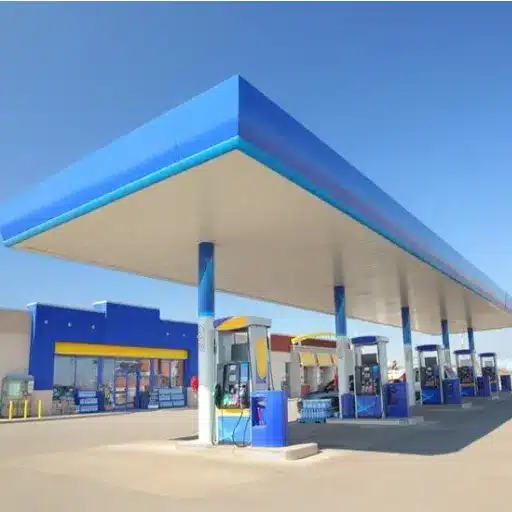
Energy service stations are becoming the future of gas stations as they strive to meet the growing demand for sustainable and alternative energy solutions. Charging of electric vehicles (EVs), hydrogen refueling, biofuels, and their variants will become the big names in energy service stations for meeting diverse energy needs. These energy service stations will be assisted by renewable power generation to reduce the use of fossil fuels and enhance their convenience and accessibility to consumers. As part of the rebranding, these stations will also provide services such as integrated digital payments, EV maintenance, and a variety of additional customer conveniences. Therefore, alongside sustainability ambitions, energy service stations will evolve to become an integral part of the life-cycle transition in establishing an energy-efficient Korea.
Emerging Technologies in Fuel Delivery
This sector has undergone rapid changes due to the integration of technology, which caters to ever-increasing energy requirements while also supporting global sustainability goals. One of the significant newer developments has been the incorporation of Artificial Intelligence and the Internet of Things. These systems provide intelligent fuel management, optimizing supply chains, predicting maintenance requirements, and preventing waste, thereby promoting seamless operations in fuel delivery.
Another revolutionary innovation is mobile fuel delivery. Such companies use app-based platforms to offer customers on-demand fueling services, essentially providing gas stations on wheels. Some reports suggest that the mobile fuel delivery market is expected to grow significantly in the coming years, driven by urbanization and the increasing adoption of EV-compatible fuel solutions.
The industrial hydrogen delivery sector, meanwhile, is gaining momentum as a clean energy source. Significant strides are being made in sustainable hydrogen transportation infrastructure, as well as in advanced technology for pressurized tanks and pipeline technology for hydrogen storage and delivery. Extravagant projections from recent industry reports suggest an exponential surge in global hydrogen demand by 2040, driven by its use in the transportation and industrial sectors.
The most promising solution in the early transformative stages is drone technology, which presents remote pathways for fuel delivery, primarily to hard-to-reach areas. The grounds of these developments are thus still in their infancy, but offer a very promising avenue to solve fuel delivery logistics for remote regions in due course.
All of these new technologies are transforming the fuel delivery ecosystem with efficiency, comfort, and environmental responsibility as critical drivers toward the future.
Shift Towards Renewable Energy Sources
As the world seeks sustainable solutions to mitigate climate change and reduce its dependence on fossil fuels, the transition to renewable energy is gaining increasing importance. Solar, wind, hydro, and geothermal energy have witnessed exponential growth in recent times. The International Energy Agency (IEA) reported that, in 2022, renewables accounted for nearly 30% of the global electricity supply, with solar and wind being the leading sources. There was a 25% increase in solar photovoltaic installations year-on-year, representing declining costs and better efficiency.
There has also been an economic consideration of the energy source. The solar and wind energy sectors are significant employers today, with more than 12 million people employed worldwide in these energy-related industries, according to IRENA. In terms of cost, renewable energy is competing fiercely with fossil fuel energy. Since 2010, the cost of utility-scale solar photovoltaic systems has decreased by over 80%.
These renewable sources are being expanded into sectors beyond electricity generation, including transportation and heating. EVs running on clean energy are continuing to grow rapidly, having doubled sales in 2021. They are expected to see significant growth by 2030, while heat pumps represent more environmentally friendly options for heating when compared to gas heat.
The internationally supported push towards renewables stems from initiatives such as the Paris Agreement, which aims to limit the global temperature increase to below 2°C above pre-industrial levels. Countries worldwide are investing more in clean energy infrastructure, with China, the U.S., and the EU leading the way in expanding renewable energy capacity.
This momentum is a testament to the strategic importance that renewables hold in advancing a sustainable, resilient, and low-carbon future: they serve as instruments for fostering innovation and ensuring energy access for generations to come.
Consumer Preferences and Trends
Rising environmental consciousness has prompted consumers to develop a preference for sustainable and eco-friendly products. Over the past year, a notable increase in searches for terms such as “sustainable fashion,” “renewable energy solutions,” and “electric vehicles” has been observed, indicating a growing interest in environmentally responsible choices. The movement for green energy has skyrocketed, with solar panel installations at their peak in several regions, driven by incentives and various tax rebates and handouts.
Additionally, plant-based diets are gaining market share for alternative protein products as more people weigh their health concerns against environmental impacts. Recent data confirm this surge in demand for meat alternatives such as plant-based burgers and protein alternatives, with a strong presence of Gen Z and millennials leading these key segments. Concurrently, consumers are increasingly seeking brands that support carbon-neutral shipping and packaging, with biodegradable materials becoming a trend to reduce waste. These trends speak of a shift in consumer behavior, with social impact and sustainability now taking center stage.
Gas Station Industry Research and Insights
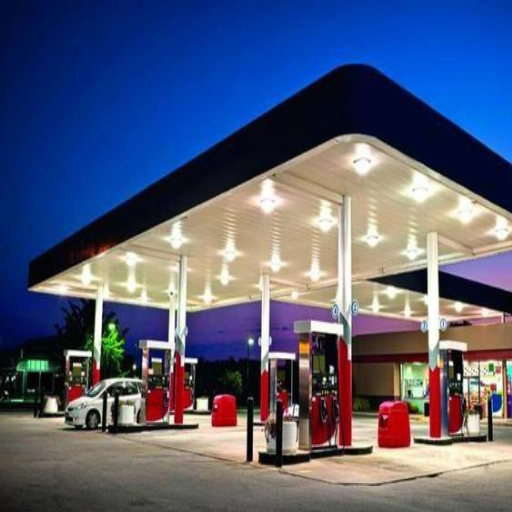
The gas station industry is undergoing a significant transformation, driven by shifting consumer preferences and advancing technology. EV adoption is reshaping the landscape, and stations are now investing more in EV charging infrastructure to remain competitive. Furthermore, gas stations are diversifying their commercial offerings to attract customers who need to refuel with grab-and-go meals, coffee shops, and retail options. Sustainability is now taking center stage, with some stations opting for renewable energy alternatives, such as solar panels, to reduce their carbon footprint. These developments surely reflect the industry’s attempt to keep pace with the evolution of market demands and emerging transportation trends.
Market Analysis and Forecasts
From my perspective, the gas station industry is undergoing a significant transformation driven by shifting consumer expectations and technological advancements. The services shall become more diversified as gas stations, railways, and night stores offer greater energy efficiency options and convenience retail offerings. The focus on sustainability is likely to intensify with the subsequent significant development in renewable energy adoption, creating a global environmental agenda. All these present-day industry prospects are characterized by tremendous ambivalence regarding their ability to adapt to these dynamics while also being able to forecast consumer needs and innovations in transportation.
Impact of Government Policies on the Gas Station Industry
Policies are indispensable in determining how the gas station industry works, thus affecting operational practices, market forces, and long-term sustainability. Programs pushing renewable energy and carbon emission reductions have had a two-way effect, encouraging gas station operators to install some clean technologies, such as EV charging stations or hydrogen fuelling points. For example, by 2023, the global promotion of EV adoption has led to the establishment of incentives, such as tax credits for EV infrastructure, which has compelled gas stations to expand their range of services. Environmental regulations, in the form of carbon pricing regulating emission standards, add pressure to the conventional fuel supply chain. The imposition of carbon taxes in many jurisdictions has led to a search for alternative, lower-emission fuels, such as biodiesel and ethanol blends, which gas stations have begun to offer.
Furthermore, government-mandated price caps or subsidies on fuel in various countries have imposed additional constraints on the profitability and competitiveness of gas stations. As a result, gas stations have shifted their focus to generating revenues from sources other than fuel, primarily through retail and food outlets. For example, in the United States, various federal and state-level grants are being offered to accelerate the development of EV infrastructure, with estimates indicating that there will be more than 500,000 EV charging stations across the country by 2030. This transition requires significant capital but puts gas stations at the forefront of the transportation industry.
Hardware is another area where government policies influence the purchasing behavior of consumers. In turn, the incentives for green vehicles and carbon policies will increasingly induce consumers to transition towards green technologies, compelling gas stations to have an identity distinct from their current fuel-based model. These policies, taken collectively, attest to the need for the gas station trade to be adaptable to regulatory changes for its sustained growth and relevance in an impending shift in the energy structure.
Reference Sources
“Optimal planning of charging stations for phased electric vehicles”
“The current status of the hydrogen energy industry and application of hydrogen fuel cell vehicles”
Frequently Asked Questions (FAQs)
What is the current state of the gas station industry in China?
The gas station industry in China is experiencing significant growth, driven by an increasing number of motor vehicles and rising demand for refined oil products. As of 2023, there are thousands of gas stations across various provinces, including Beijing and Hebei, catering to a diverse range of fuel types, including petrol and natural gas.
How many gas stations are there in China?
The number of gas stations in China is estimated to be in the tens of thousands, reflecting the country’s growing oil and gas industry. This expansion is closely linked to the increasing number of automobiles and the rising consumption of refined oil, which drives demand for filling stations nationwide.
What types of fuel are available at gas stations in China?
Gas stations in China typically offer a variety of fuels, including gasoline, diesel, and natural gas. Many stations are also beginning to incorporate electric vehicle charging infrastructure to meet the demands of newer energy vehicles, including plug-in hybrids and fully electric models.
What are the key players in the gas station industry in China?
Several major companies, including state-owned enterprises and private sector players, dominate the gas station industry in China. These companies provide not only traditional fuels but also a range of products and services, including convenience store items and vehicle maintenance services. The competition among these enterprises is shaped by a series of policies and reforms aimed at improving efficiency and customer service.
How is the demand for refined oil evolving in China?
The demand for refined oil in China continues to grow due to the increasing number of motor vehicles and urbanization. Industry research indicates that this trend is expected to persist through 2024, driving the need for more energy service stations and enhancing the market size of the gas station industry.
What innovations are being introduced in the gas station industry?
Innovations in the gas station industry include the introduction of advanced gas station equipment, such as automated payment systems and enhanced fuel dispensers. Additionally, many stations are adopting new energy sources, such as liquefied natural gas (LNG) and compressed natural gas (CNG), to diversify their offerings and meet environmental regulations.
What role do energy service stations play in fuel conservation?
Energy service stations are increasingly focused on fuel conservation initiatives, promoting the use of alternative fuels and providing education on efficient driving practices. These stations aim to reduce the overall demand for refined oil and encourage consumers to consider more sustainable options, contributing to national energy conservation goals.
How do government policies impact the gas station industry in China?
Government policies play a crucial role in shaping the gas station industry in China. Regulations regarding tariffs, fuel prices, and environmental standards have a direct impact on market dynamics and the competitiveness of gas stations. Recent reforms have aimed to increase transparency and efficiency within the market, enabling new entrants and innovations to thrive.
What is the future outlook for gas stations in China?
The future outlook for gas stations in China is promising, with ongoing investments in infrastructure and a shift towards more sustainable energy solutions. As the country continues to evolve its energy landscape, gas stations are likely to expand their offerings, incorporating more non-fuel services and adapting to the changing demands of consumers.


